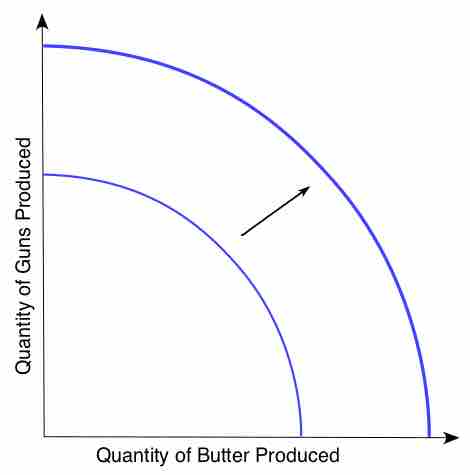Productivity is essentially the efficiency in which a company or economy can transform resources into goods, potentially creating more from less. Increased productivity means greater output from the same amount of input. This is a value-added process that can effectively raise living standards through decreasing the required monetary investment in everyday necessities (and luxuries), making consumers wealthier (in a relative sense) and businesses more profitable.
From a broader perspective, increased productivity increases the power of an economy through driving economic growth and satisfying more human needs with the same resources. Increased gross domestic product (GDP) and overall economic outputs will drive economic growth, improving the economy and the participants within the economy. As a result, economies will benefit from a deeper pool of tax revenue to draw on in generating necessary social services such as health care, education, welfare, public transportation and funding for critical research. The benefits of increasing productivity are extremely far-reaching, benefiting participants within the system alongside the system itself.
Productivity Beneficiaries
To expand upon this, there are three useful perspectives in which to frame the value in improving productivity within a system from an economic standpoint:
- Consumers/Workers: At the most micro level we have improvements in the standard of living for everyday consumers and workers as a result of increased productivity. The more efficiency captured within a system, the lower the required inputs (labor, land and capital) will be required to generate goods. This can potentially reduce price points and minimize the necessary working hours for the participants within an economy while retaining high levels of consumption.
- Businesses: Businesses that can derive higher productivity from a system also benefit from creating more outputs with the same or fewer inputs. Simply put, higher efficiency equates to better margins through lower costs. This allows for better compensation for employees, more working capital and an improved competitive capacity.
- Governments:Higher economic growth will also generate larger tax payments for governments. This allows governments to invest more towards infrastructure and social services (as noted above).
Factors Affecting Productivity
The final important consideration in assessing productivity potential is the production-possibility frontier (PPF), which essentially outlines the maximum production quantity of two goods (in the scope of our current technological capacity and supply). This demonstrates the confinement of productivity, and thus is well captured in the Leontief production function. The critical takeaway here is that the production function will generally be affected by two things: overall supply and technological capabilities. Note that demand does not come into account in altering the production function or overall productivity potential. The illustration in the following figure demonstrates an increase in PPF, thus affecting the production function.

Production-Possibility Frontier Expansion
In this graph, the prospective production-possibility frontier shifts to the right, implying a higher supply or improved technological production ability of the two goods being discussed (in this case guns and butter).